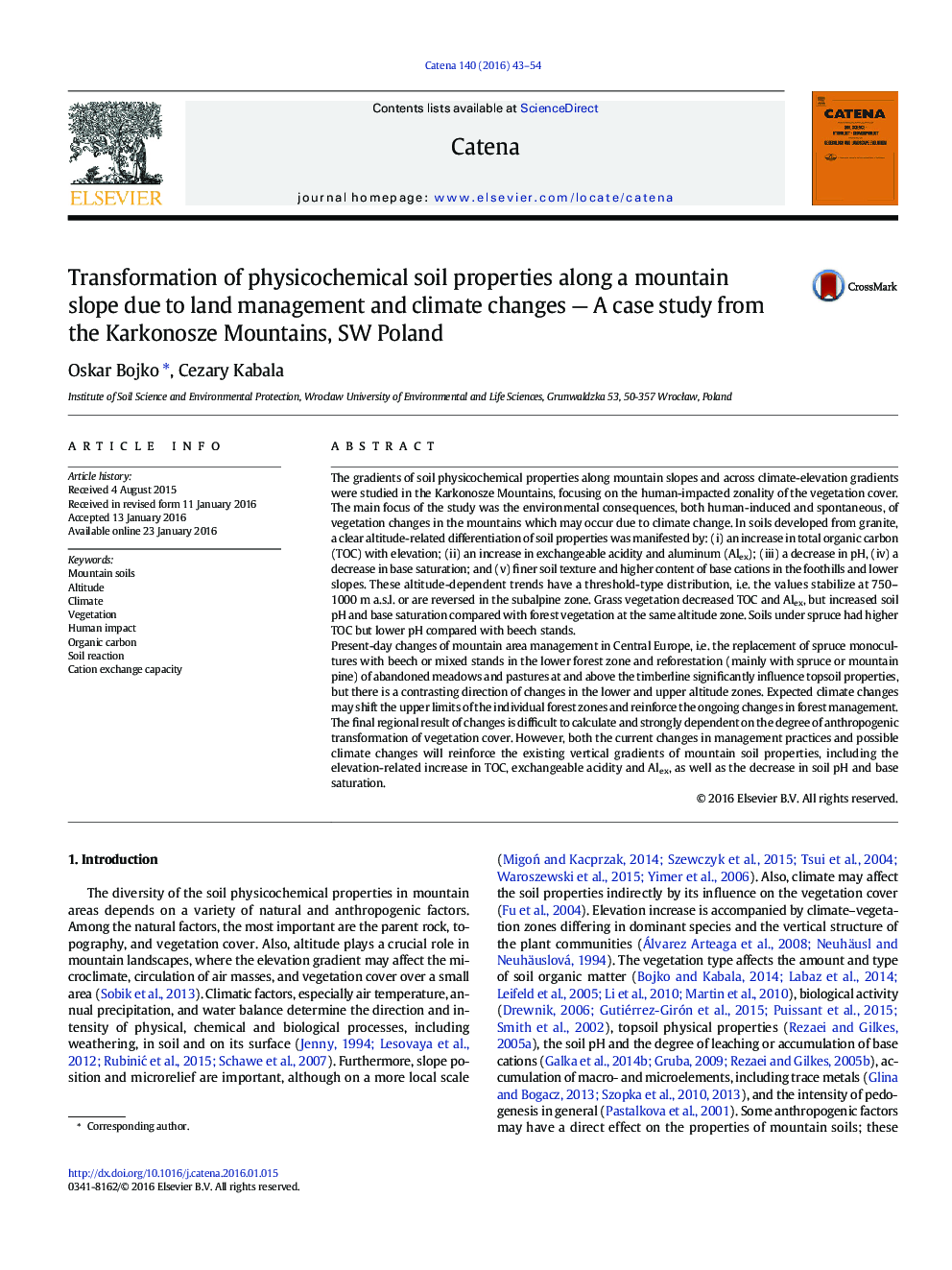| کد مقاله | کد نشریه | سال انتشار | مقاله انگلیسی | نسخه تمام متن |
|---|---|---|---|---|
| 4570917 | 1629212 | 2016 | 12 صفحه PDF | دانلود رایگان |
• Soil catenas on granite were studied in an altitude range of 450–1400 m a.s.l.
• Altitude-related gradient was found for TOC, pH, acidity, base saturation, and texture.
• Climate-related effects are modified by vegetation in all altitude zones.
• Land use transformations lead to opposite changes in soil properties in the lower and upper altitude zones.
• Expected climate changes may have the same effects as current changes in land use and forest management.
The gradients of soil physicochemical properties along mountain slopes and across climate-elevation gradients were studied in the Karkonosze Mountains, focusing on the human-impacted zonality of the vegetation cover. The main focus of the study was the environmental consequences, both human-induced and spontaneous, of vegetation changes in the mountains which may occur due to climate change. In soils developed from granite, a clear altitude-related differentiation of soil properties was manifested by: (i) an increase in total organic carbon (TOC) with elevation; (ii) an increase in exchangeable acidity and aluminum (Alex); (iii) a decrease in pH, (iv) a decrease in base saturation; and (v) finer soil texture and higher content of base cations in the foothills and lower slopes. These altitude-dependent trends have a threshold-type distribution, i.e. the values stabilize at 750–1000 m a.s.l. or are reversed in the subalpine zone. Grass vegetation decreased TOC and Alex, but increased soil pH and base saturation compared with forest vegetation at the same altitude zone. Soils under spruce had higher TOC but lower pH compared with beech stands.Present-day changes of mountain area management in Central Europe, i.e. the replacement of spruce monocultures with beech or mixed stands in the lower forest zone and reforestation (mainly with spruce or mountain pine) of abandoned meadows and pastures at and above the timberline significantly influence topsoil properties, but there is a contrasting direction of changes in the lower and upper altitude zones. Expected climate changes may shift the upper limits of the individual forest zones and reinforce the ongoing changes in forest management. The final regional result of changes is difficult to calculate and strongly dependent on the degree of anthropogenic transformation of vegetation cover. However, both the current changes in management practices and possible climate changes will reinforce the existing vertical gradients of mountain soil properties, including the elevation-related increase in TOC, exchangeable acidity and Alex, as well as the decrease in soil pH and base saturation.
Journal: CATENA - Volume 140, May 2016, Pages 43–54
